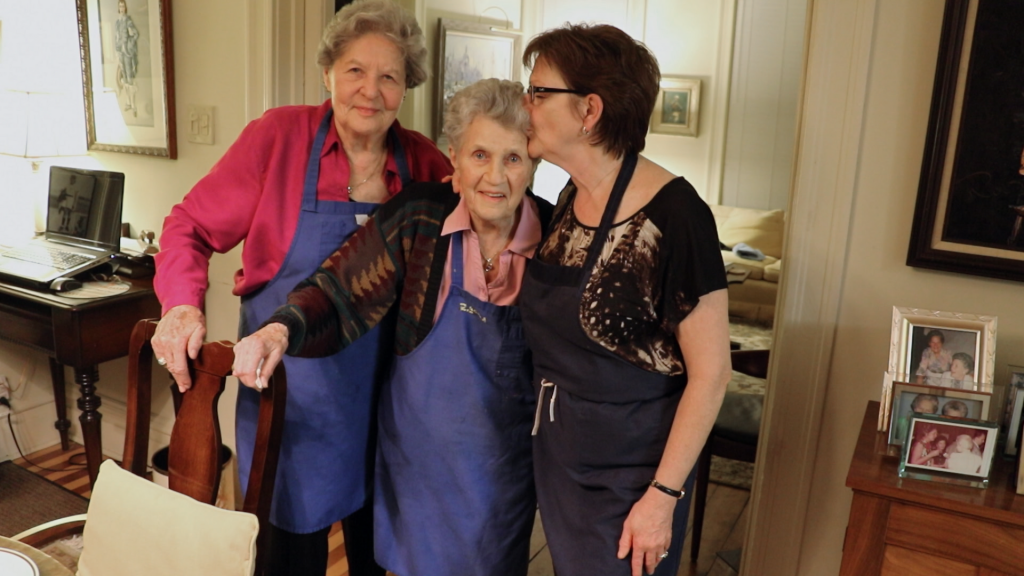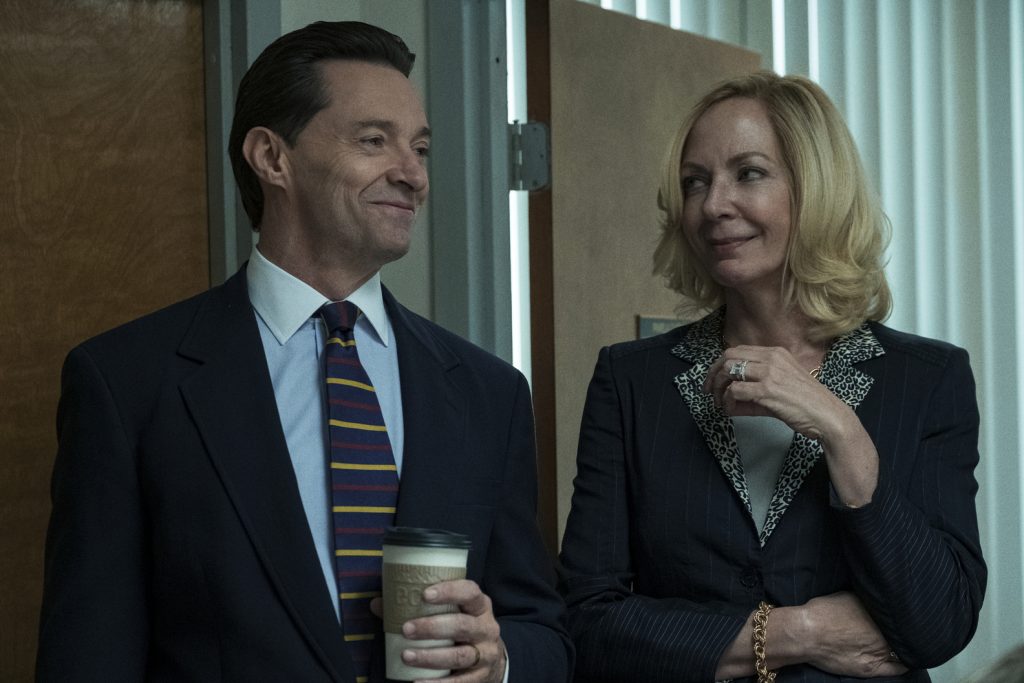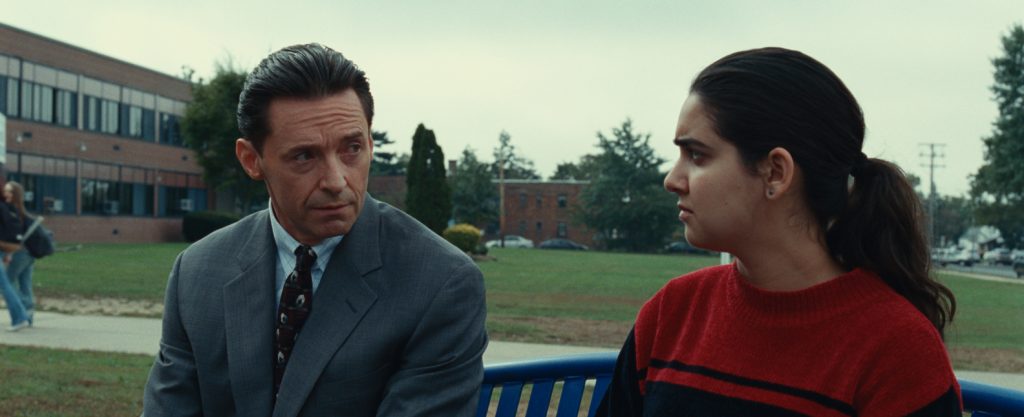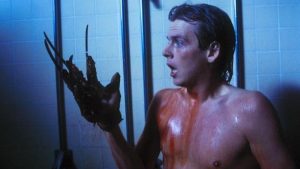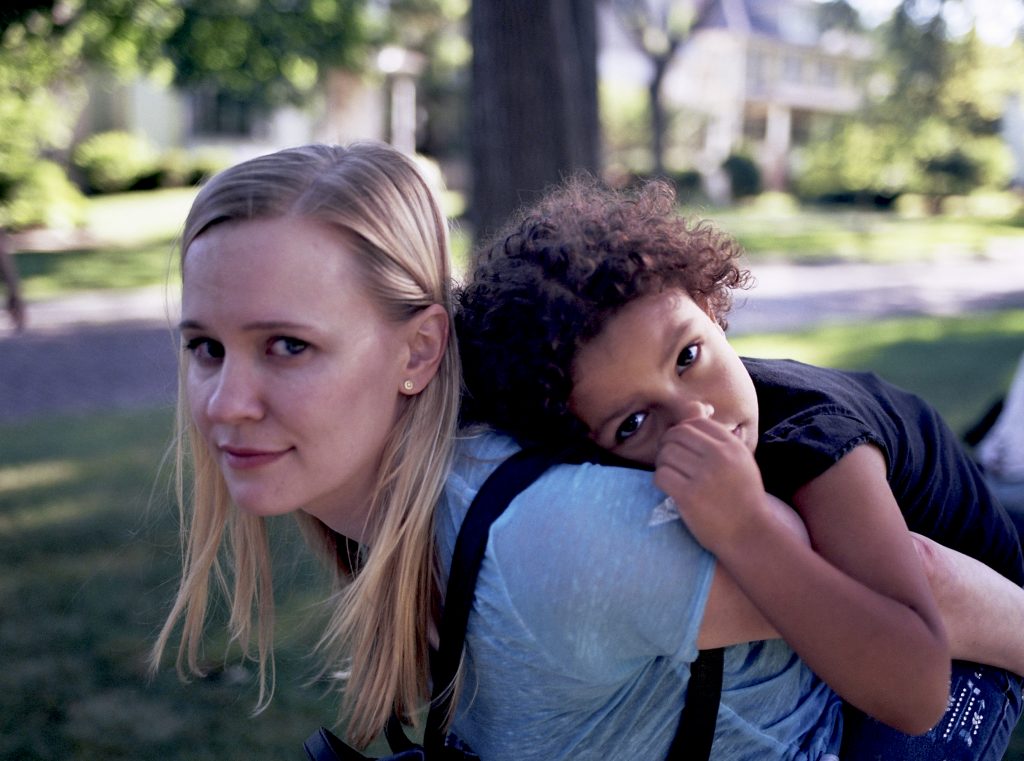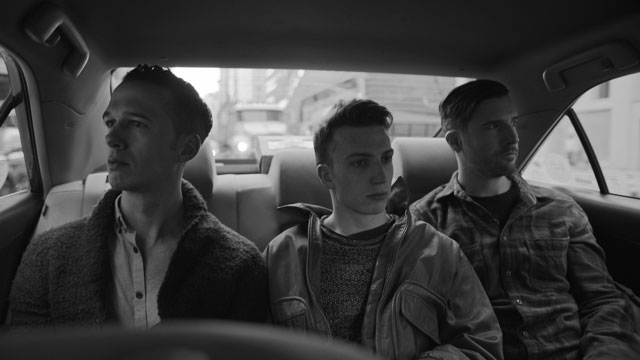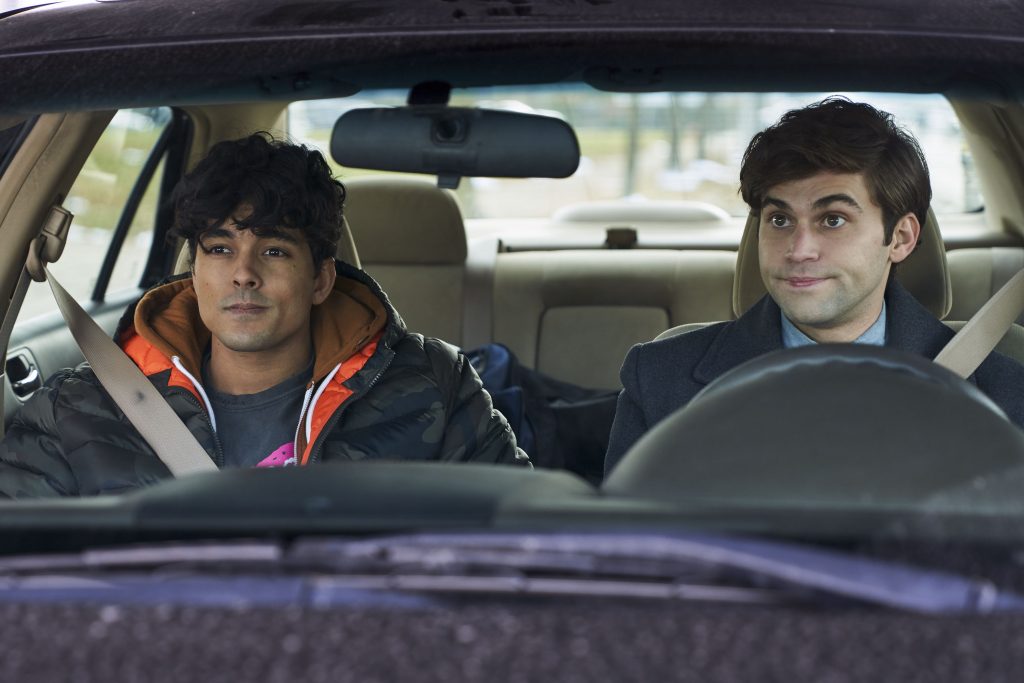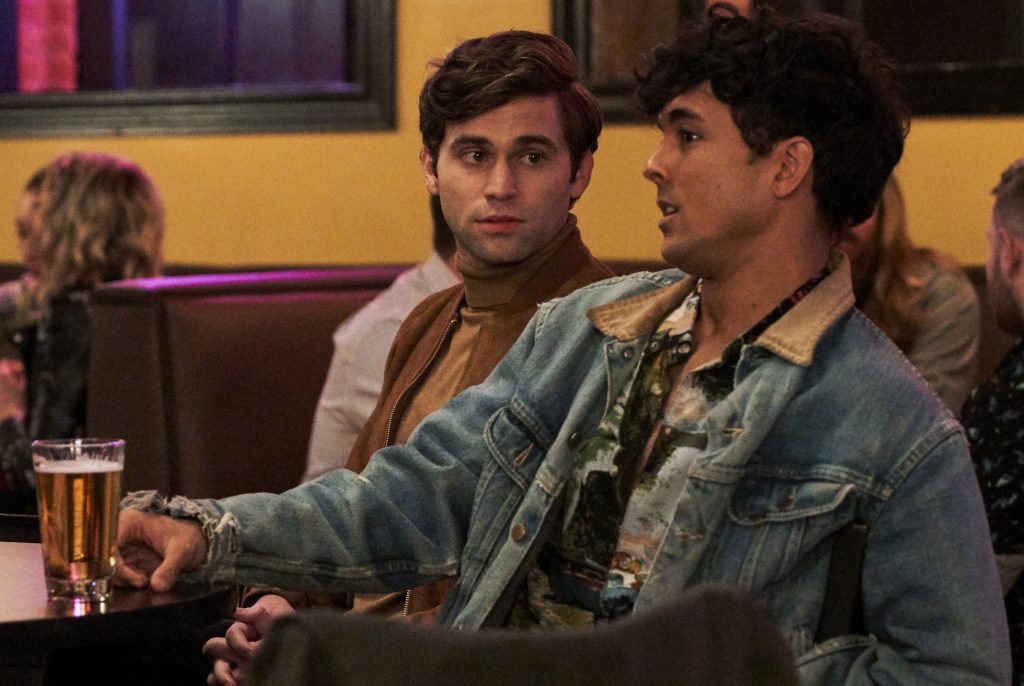May 23, 2020
by Carla Hay
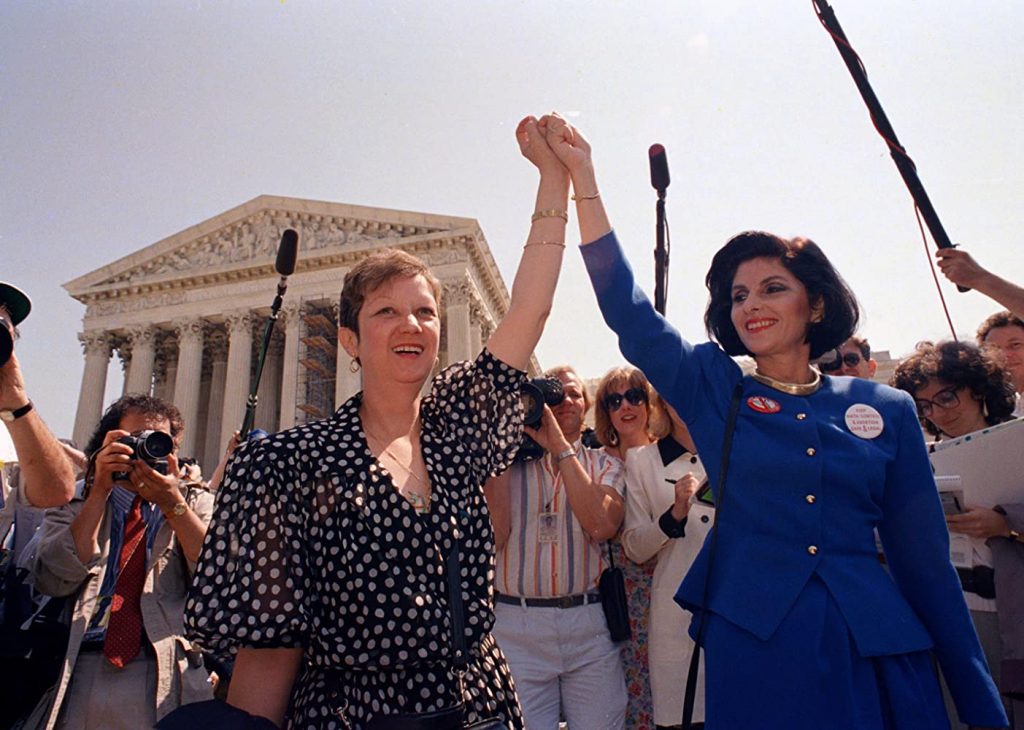
Directed by Nick Sweeney
Culture Representation: The documentary “AKA Jane Roe” interviews Norma McCorvey and an all-white group of people representing the working-class, middle-class and upper-class who talk about McCorvey and the impact she had on the abortion debate in the United States.
Culture Clash: McCorvey advocated for both sides of the debate at different times in her life.
Culture Audience: “AKA Roe” will appeal primarily to people who have an interest in abortion issues, but the documentary will also appeal to people who want an inside look at how the media and activist leaders can be manipulated by an attention-hungry person.

Before she died of heart failure in February 2017, at the age of 69, controversial abortion-debate figurehead Norma Jean McCorvey participated in a documentary about her life and made a bombshell revelation while making the film. The ailing McCorvey had a “deathbed confession” about her extremely contradictory activism about abortion. That confession doesn’t come until the end of director Nick Sweeney’s absorbing documentary “AKA Jane Roe,” but the entire film offers a fascinating portrait of a deeply troubled woman who will forever be known as a groundbreaking plaintiff in abortion legislation.
A great deal of the documentary includes exclusive interviews with McCorvey and separate individual interviews with advocates on both sides of the abortion debate, as well as archival footage. As the title of the documentary indicates, McCorvey was also known by the alias Jane Roe, the plaintiff in the U.S. Supreme Court case Roe v. Wade, which the plaintiff won, and it resulted in making abortion federally legal throughout the United States in 1973. Prior to this Supreme Court decision, it was up to an individual state to decide if abortion could be legal or not in the state. McCorvey was given the alias Jane Roe to protect her privacy, but after the Supreme Court decision, she went public with her real identity.
McCorvey, a Texas resident in the Dallas area, was divorced and pregnant with her third child in 1969, at the age of 21, when she sought an abortion in Texas and was denied. By her own admission, she was also an alcoholic, drug addict and “street person” during her 20s, and she was in no position to be a healthy and responsible mother to a child. And she couldn’t afford to travel to a state that had less restrictive abortion laws than Texas.
McCorvey had already lost custody of her first child, Melissa (also known as Missy), who was born during what McCorvey describes as an abusive marriage to a husband whom she married when she was 16 and whom she eventually divorced. Missy was primarily raised by McCorvey’s mother. McCorvey’s second child from another man was put up for adoption. The child whom McCorvey was pregnant with when she was denied an abortion (which led to the Roe v. Wade case) was also put up for adoption.
Although one might assume that McCorvey’s seedy and troubled background would make her a less-than-ideal “poster child” for the pro-choice movement, the movement selected her because she was the exact type of underprivileged and uneducated woman who was the most vulnerable to getting an unsafe, illegal abortion that could kill her. The Roe v. Wade case, with attorneys Sarah Heddington and Linda Coffee representing the plaintiff, applies to all females. But the plaintiffs’ attorneys argued that when abortion is illegal, poor people tend to suffer the most.
In the beginning of “AKA Jane Roe,” McCorvey tells her life story, by describing her unhappy childhood. She says that her mother was a “drunk” and a “two-faced bitch who didn’t want a second child—me.” She describes her mother as physically abusive to her and “someone who had a taste for the party life and didn’t want to let go.”
Her father couldn’t take it anymore and left the family when McCorvey was young. She became a juvenile delinquent, which set her on a path to becoming a drug addict, drug dealer and hustler by the time she was in her 20s. Andy Meiseler, who co-wrote McCorvey’s 1994 memoir “I Am Roe,” appears briefly in the documentary to talk about her background.
The documentary shows that McCorvey was in obviously failing health while doing these interviews. She’s wheelchair-bound and often wears an oxygen tube, even though in other parts of the movie, it’s clear that smoking is still a bad habit for her. When asked if she misses her family, McCorvey replies bitterly, “You can’t miss anything you never had.”
McCorvey also talks about knowing from an early age that her true sexual identity was being a lesbian. She describes how, at the age of 10, she and a friend named Rita, who was around the same age, robbed a gas station by stealing money from the register, so that they could run away to Oklahoma City. While the two girls were staying at a motel, a maid caught them kissing, and the two girls were arrested and sentenced to juvenile detention, partially because of the robbery but also because they were caught in homosexual activity.
As McCorvey remembers it, being in juvenile detention surrounded by other females confirmed her sexual preference: “I had a lot of girlfriends,” she says of her time locked up with other females. When she got out, she was sent to live with a male relative who sexually abused her. And then she got married at 16 to 22-year-old Woody McCorvey, only because (according to Norma McCorvey) her mother told that if she was having sex with him, she might as well marry him.
McCorvey also admits in the film that she got married because she knew that Woody had a lot more money than she did. She mentions that she always dreamed of becoming a movie star so that she could have a glamorous life. And she says something very telling which also explains her motivations for her controversial decisions: “I learned straight on that if you’re nice and quiet and polite, no one pays attention to you—and I like attention.”
After being a very vocal pro-choice advocate in the 1970s and 1980s, McCorvey went in the complete opposite direction in the 1990s and 2000s, by becoming a born-again Christian and voicing her support for the pro-life movement. Was this conversion sincere or was it all an act? In the documentary, she reveals that it was all an act, which she basically admits that she did for the money that pro-life groups were paying her.
The film takes a responsible journalistic approach by interviewing influential activists on both sides of the abortion debate. On the pro-choice side are Charlotte Taft (who was an abortion counselor at now-shuttered Routh Street Women’s Clinic in Dallas) and feminist attorney Gloria Allred, who had McCorvey as a client in the late 1980s. On the pro-life side are Rev. Flip Benham and Rev. Rob Schenck, who talk extensively about why the pro-life movement is working hard to make abortion illegal again.
Benham is by far the more fanatical of the two, since he doesn’t believe in any compromise in the abortion debate. He also advocates for and participates in using extreme tactics to get people to stop having or facilitating legal abortions. “I’m not an activist. I’m a Christian,” Benham insists, even though he is shown in a lot of footage holding picket signs and shouting insults at people who go into clinics that provide abortions.
Taft calls Benham a “constant harasser.” Benham describes himself as “born-again” and someone who used to be a “drunken buffoon.” He adds, “I wanted my wife to abort our twin boys … But I came to the realization that abortion is murder.”
Schenck says that people in the pro-life movement consider Roe v. Wade to “represent the most loathsome and terrible practices in our society: killing children.” Just like Benham, Schenck worked closely with McCorvey when she switched alliances and became an activist for the pro-life movement.
Taft says about McCorvey’s about-face: “Being friends with Norma was a complicated experience.” The documentary points out that even before McCorvey renounced the pro-choice movement and began to campaign against abortion, she had already alienated herself from much of the pro-choice movement when, in the 1980s, she admitted that the abortion she sought back in 1969 wasn’t because it was a rape pregnancy. She said she lied to the doctor about being raped because she thought it would increase her chances of getting a medically approved abortion in Texas.
Although Roe v. Wade was never about how or why pregnancies occur, McCorvey’s credibility and reputation were tarnished when she publicly confessed that she lied about that 1969 pregnancy being the result of rape. That’s why when there was a major pro-choice rally in Washington, D.C., in April 1989 (an estimated 300,000 people attended), McCorvey was not invited to speak at the rally, even though she was there. She also wasn’t invited to be on stage. Instead, there were several celebrity speakers, such as Gloria Steinem, Whoopi Goldberg, Valerie Harper and Cybill Shepherd.
It was at this rally where attorney Allred first met McCorvey, who would eventually become her client. Allred says of McCorvey being snubbed by the pro-choice leaders at the rally: “She felt that she had been denied the opportunity to be recognized and acknowledged.” Allred and McCorvey did a whirlwind publicity tour to rehabilitate McCorvey’s public image as a pro-choice advocate. But by 1995, McCorvey had converted to Catholicism, renounced her previous life as a pro-choice activist, and became heavily involved in pro-life activities and fundamentalist Christian proselytism.
One of the casualties of McCorvey’s highly publicized religious conversion was her relationship with her longtime partner Connie Gonzalez. Although they had been living openly as lesbians even after McCorvey’s conversion, McCorvey and Gonzalez supposedly agreed to their church’s demands that they no longer engage in any homosexual activity. According to Benham: “One cannot be a practicing homosexual and Christian at the same time. That would be a distinct impossibility.”
In archival footage of Benham baptizing McCorvey in a swimming pool, Gonzalez looks on with a mixture of fear and sadness, as if she knew what would inevitably happen to her relationship with McCorvey. After Gonzalez had a stroke in 2004, McCorvey left her in 2006. When McCorvey talks about Gonzalez (who died in 2015) in the documentary, it’s the only time that the feisty and defiant McCorvey seems extremely vulnerable and regretful. She describes Gonzalez as a “good person” who was the love of her life.
One of the must-see aspects about “AKA Jane Roe” is how the documentary shows the reactions of Allred, Taft, Benham and Schenck when the filmmakers show them the interview footage of McCorvey proudly confessing that she just used the pro-life movement to get money—she received an estimated $456,911 over several years—and she only said what the pro-life leaders told her to say, not because she actually had pro-life beliefs. All of them initially react with surprise, but once the reality sinks in of what McCorvey confessed, they each have different follow-up responses.
The documentary also includes McCorvey getting a major shock of her own, when she’s shown reacting in angry disbelief to the results of the 2016 U.S. presidential election. The morning after the election, McCorvey (who supported Hillary Clinton) is shown excusing herself to go get sick in the bathroom after it was officially declared that Donald Trump was going to be the 45th president of the United States.
As for whether or not McCorvey’s final words should be believed, even after she told so many abortion-related lies over the years, she says in the documentary’s interview footage: “I am a good actress. Of course, I’m not acting now.” McCorvey may not have made it to Hollywood to become a glamorous movie star, but it’s clear that she did get her wish to become a famous actress after all.
FX premiered “AKA Jane Roe” on May 22, 2020. FX on Hulu premiered “AKA Jane Roe” on May 23, 2020.




